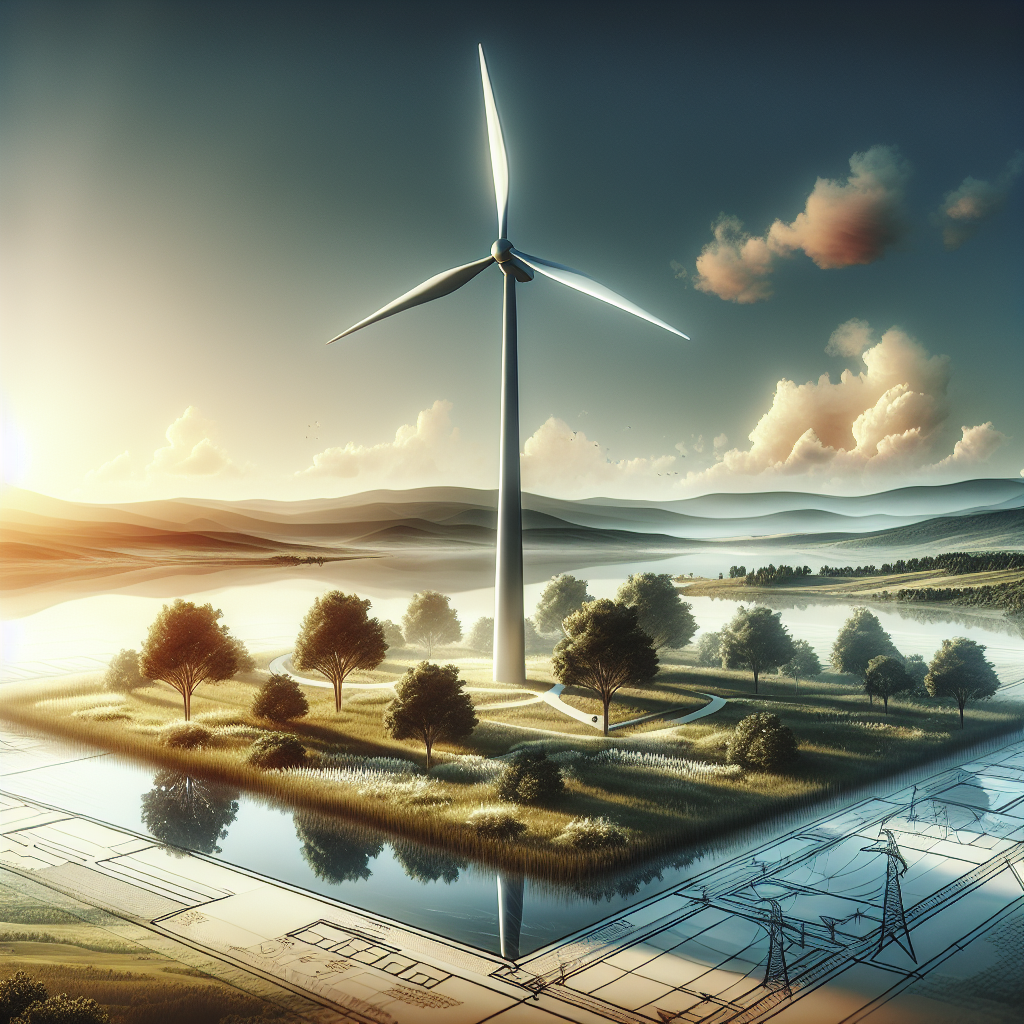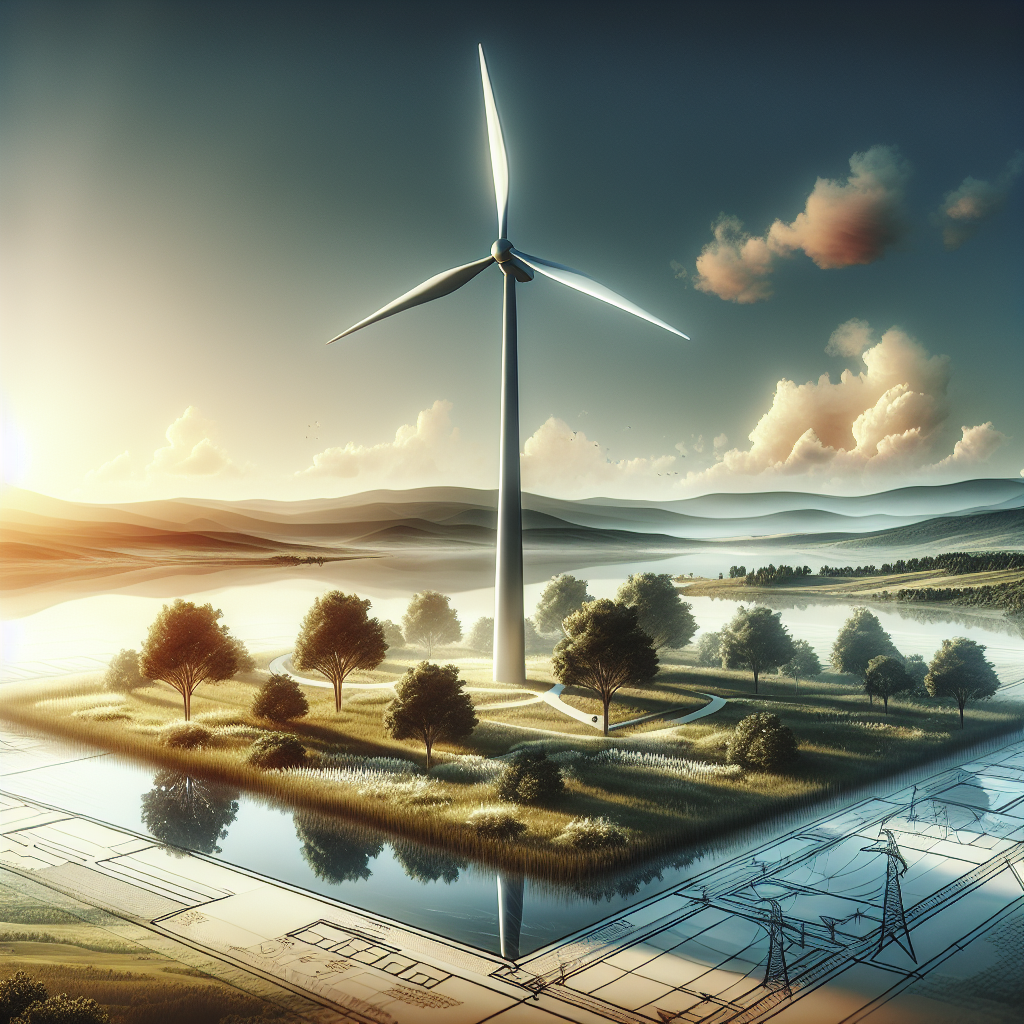Are you interested in harnessing renewable energy and reducing your carbon footprint? Look no further, as this article will guide you on how to construct a simple wind turbine for generating electricity. By following these straightforward steps, you can tap into the power of the wind and contribute to a greener future. Whether you’re a DIY enthusiast or simply curious about renewable energy, this guide is designed to be accessible for everyone. So, get ready to embark on an exciting journey of constructing your very own wind turbine and embracing a more sustainable way of generating electricity.
Materials Needed
To build a simple wind turbine for electricity, you will need the following materials:
Metal pipe
A metal pipe will serve as the main support structure for your wind turbine. It should be sturdy and resistant to corrosion.
PVC pipe
PVC pipes will be used to construct the blades of your wind turbine. PVC is a durable and lightweight material that is easily accessible.
Wood
Wood will be used to build the tower and other structural components of the wind turbine. Make sure to choose wood that is strong and able to withstand outdoor conditions.
Wire
Wire is required for connecting the generator to the battery and for other electrical connections within the wind turbine.
Generator
A generator is a crucial component of a wind turbine, as it converts the rotational energy of the blades into electricity. Make sure to select a generator that is compatible with your power requirements.
Blades
The blades are responsible for capturing the wind and turning it into rotational energy. You can choose to either purchase pre-made blades or make them yourself.
Bolts and Nuts
Bolts and nuts are essential for assembling the various components of the wind turbine securely. Make sure to choose the appropriate size for your specific needs.
Choosing a Location
Before building your wind turbine, it is important to carefully consider the location where it will be installed. Here are some factors to take into account:
Wind speed
The success and efficiency of your wind turbine depend on the wind speed in the chosen location. Higher wind speeds generally result in greater electricity generation. Ideally, choose a location with consistent and strong winds.
Accessibility
Consider the ease of access to the wind turbine location. This will be important for maintenance and any necessary repairs in the future.
Distance from obstructions
Make sure there are no significant obstructions such as trees, buildings, or other structures that may block or disrupt the wind flow. A clear and unobstructed path for the wind is crucial for optimal performance.
Land ownership
Ensure that you have permission from the landowner to install a wind turbine on their property. It is important to adhere to all local regulations and obtain any necessary permissions or permits.

Building the Tower
The tower forms the backbone of your wind turbine system and provides the necessary height to harness the wind. Here’s how to construct it:
Selecting the height
The height of the tower will depend on various factors, including wind speed and the surrounding landscape. Generally, taller towers allow for better wind capture, but they also require more materials and can be more challenging to construct. Choose a height that balances efficiency and practicality.
Digging the foundation
Start by digging the foundation for the tower. This involves digging a hole in the ground and pouring concrete to create a stable base for the tower. Ensure that the foundation is deep enough and able to withstand the weight and forces exerted by the wind turbine.
Mounting the mast
Once the foundation has set, mount the metal pipe (or mast) securely into the foundation. This will serve as the main support structure for the wind turbine and needs to be anchored firmly to withstand the wind.
Assembling the tower
After mounting the mast, systematically assemble the tower by attaching the wooden sections. Follow the plans or instructions you have chosen and ensure that each section is securely connected. Take care to level the tower as you go to ensure stability.
Constructing the Blades
The blades of the wind turbine are crucial for capturing the wind and converting it into rotational energy. Here’s what you need to know about constructing effective blades:
Designing the shape
The shape of the blades determines their efficiency and performance. Research different blade designs and choose one that is suitable for your wind turbine. Consider factors such as aerodynamics, wind speed, and the desired electrical output.
Choosing the material
PVC pipes are commonly used for constructing wind turbine blades due to their durability and affordability. However, other materials such as fiberglass or carbon fiber can also be used for more advanced designs.
Cutting the blades
Cut the PVC pipe into the desired length for your blades. Keep in mind that all the blades should be of equal length to ensure balanced operation. Use appropriate tools and follow safety precautions when cutting the PVC pipe.
Balancing the blades
To ensure smooth and efficient operation, it is important to balance the blades. This can be done by trimming or adding weight to the blades until they are evenly balanced. Proper blade balance reduces stress on the generator and extends its lifespan.

Building the Generator
The generator is the heart of your wind turbine, as it converts the rotational energy of the blades into usable electricity. Here’s how to build it:
Selecting the motor
Choose a motor that is suitable for generating electricity from the rotational energy provided by the wind turbine. Generally, a permanent magnet alternator or a brushed DC motor with a suitable voltage range is used for this purpose.
Attaching the blades
Securely attach the blades to the rotor of the generator. This is crucial to ensure that the rotational energy of the wind is properly transferred to the generator’s rotor. Use sturdy bolts and nuts to fasten the blades securely.
Wiring the generator
Connect the wires from the generator to the appropriate terminals. Make sure to follow the manufacturer’s instructions or consult a guide specific to your generator. Proper wiring is essential for efficient electricity generation.
Installing the regulator
A regulator controls the output voltage of the wind turbine to ensure a stable and consistent supply of electricity. Follow the instructions provided with the regulator to install it correctly and connect it to the generator.
Connecting the Components
Once you have constructed the tower, blades, and generator, it’s time to connect all the components together. Here’s what you need to do:
Wiring the generator to the battery
Connect the output wires of the generator to the appropriate terminals of a battery bank. This allows you to store the generated electricity for later use when the wind is not blowing. Ensure that the wiring is secure and properly insulated.
Installing an inverter
If you wish to use the electricity generated by the wind turbine to power household appliances or feed it into the electrical grid, you will need an inverter. Install the inverter according to the manufacturer’s instructions and connect it to the battery bank.
Connecting to the electrical system
To utilize the electricity generated by the wind turbine, connect the inverter or battery bank to your electrical system. This may involve working with an electrician to ensure that the connection is safe and complies with local electrical codes.
Testing and Troubleshooting
Before relying on your wind turbine for electricity generation, it is important to thoroughly test and troubleshoot any issues. Here’s what you should do:
Checking the wind direction
Observe the wind direction and ensure that the blades of your wind turbine are aligned with the prevailing winds. Adjust the angle or position of the wind turbine if necessary to optimize its performance.
Measuring the generated voltage
Use a voltmeter to measure the voltage being generated by the wind turbine. Compare the measured voltage to the expected voltage based on the wind speed. This will give you an indication of the efficiency of your wind turbine.
Troubleshooting common issues
Identify and resolve any common issues that may arise, such as loose connections, faulty wiring, or unbalanced blades. Refer to troubleshooting guides or consult with experts if needed. Regular maintenance and inspection can help prevent potential issues.
Maintaining the Wind Turbine
To ensure optimal performance and longevity of your wind turbine, regular maintenance is essential. Here are some maintenance tasks to keep in mind:
Inspecting the tower and blades
Regularly inspect the tower and blades for any signs of wear, damage, or corrosion. Look for loose bolts, cracks, or any other potential issues. Address these issues promptly to prevent further damage.
Lubricating moving parts
Keep all moving parts of the wind turbine properly lubricated to reduce friction and wear. This includes the generator bearings, yaw mechanism, and any other rotating elements. Use lubricants recommended by the manufacturer.
Replacing worn-out components
Over time, certain components of the wind turbine may wear out or become damaged. Be prepared to replace these components as needed to ensure the continued operation of your wind turbine. Regularly check for signs of wear and proactively replace parts when necessary.
Safety Precautions
When working with a wind turbine, it is important to prioritize safety. Here are some safety precautions to follow:
Working at height
When constructing or maintaining the wind turbine, ensure that you use appropriate safety equipment such as harnesses, hard hats, and safety goggles. Take necessary precautions to prevent falls or other accidents when working at height.
Electrical safety
Always follow electrical safety protocols when working with the generator, wiring, and electrical connections. Ensure that the power is turned off when performing maintenance tasks and use appropriate protective equipment.
Fall protection
When climbing the tower or working at heights, ensure that you have appropriate fall protection systems in place such as safety harnesses and properly secured ladders. Never work alone and always have a safety plan in case of accidents.
Conclusion
Building a DIY wind turbine can be a rewarding and cost-effective way to generate electricity from renewable energy sources. By carefully selecting materials, choosing a suitable location, and following proper construction and maintenance procedures, you can harness the power of the wind to meet your energy needs. As the world continues to strive towards renewable energy, DIY wind turbines can contribute to a greener and more sustainable future.

